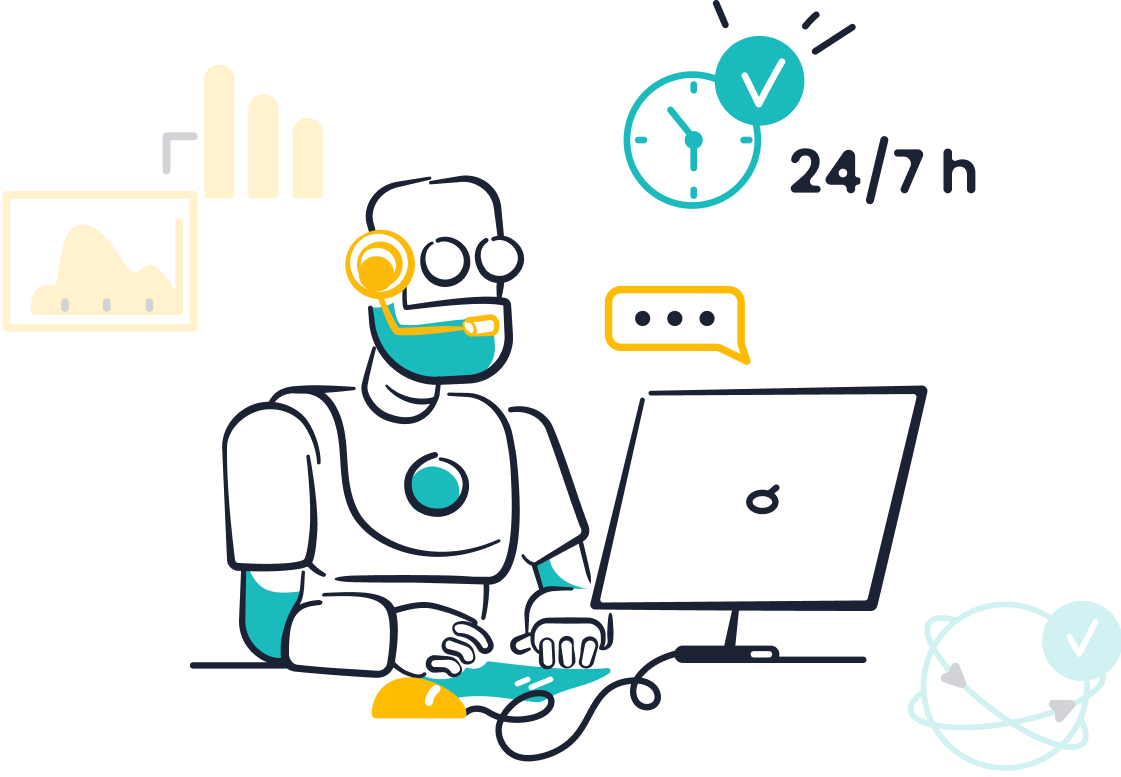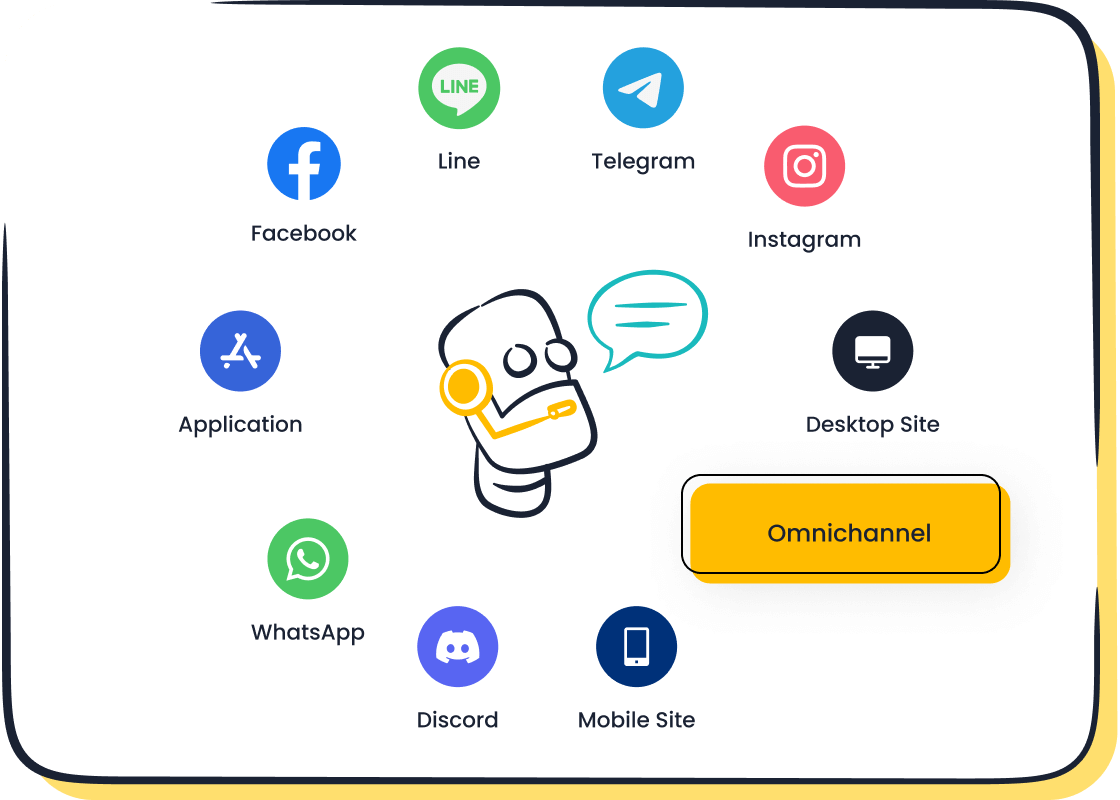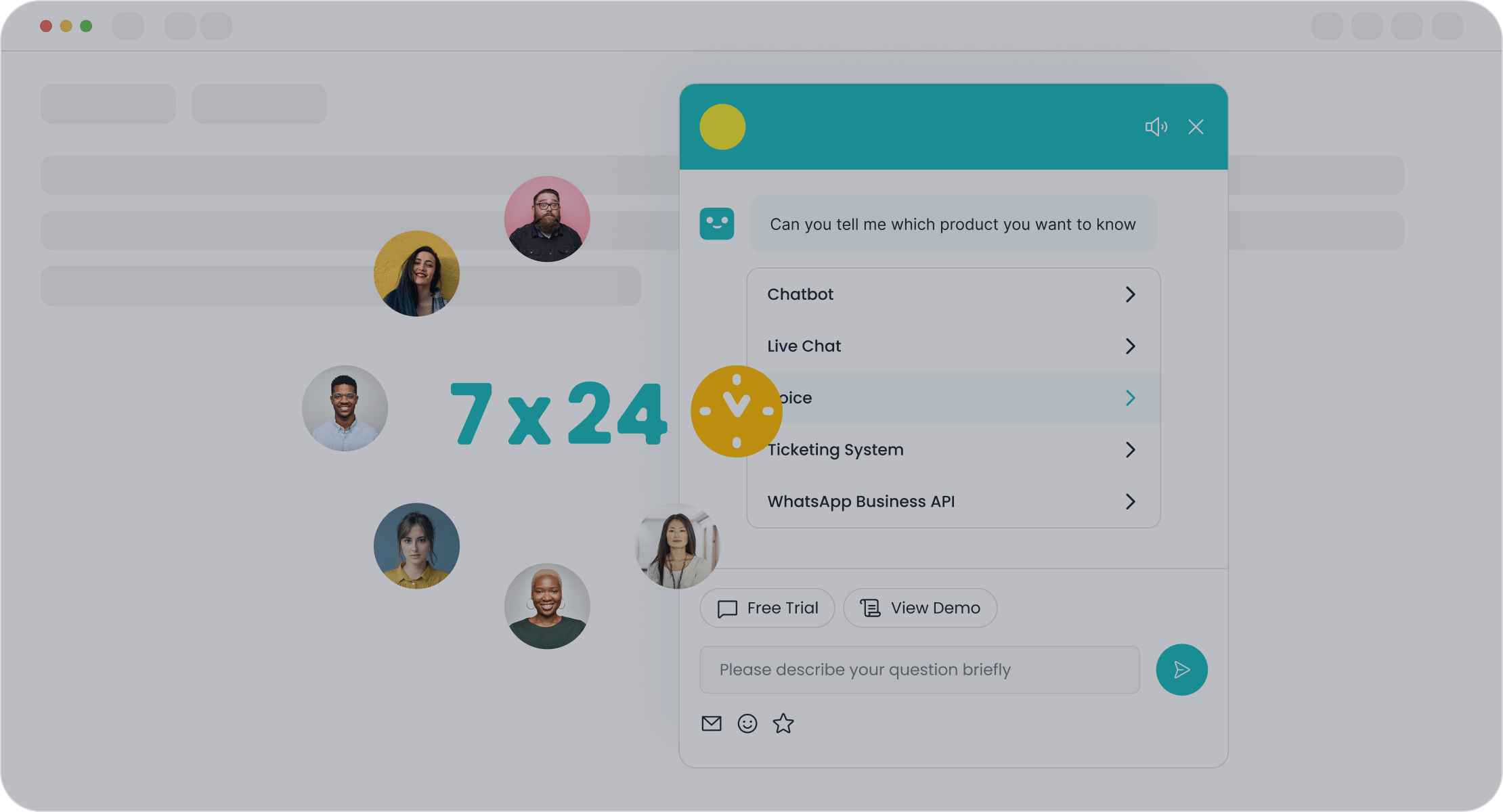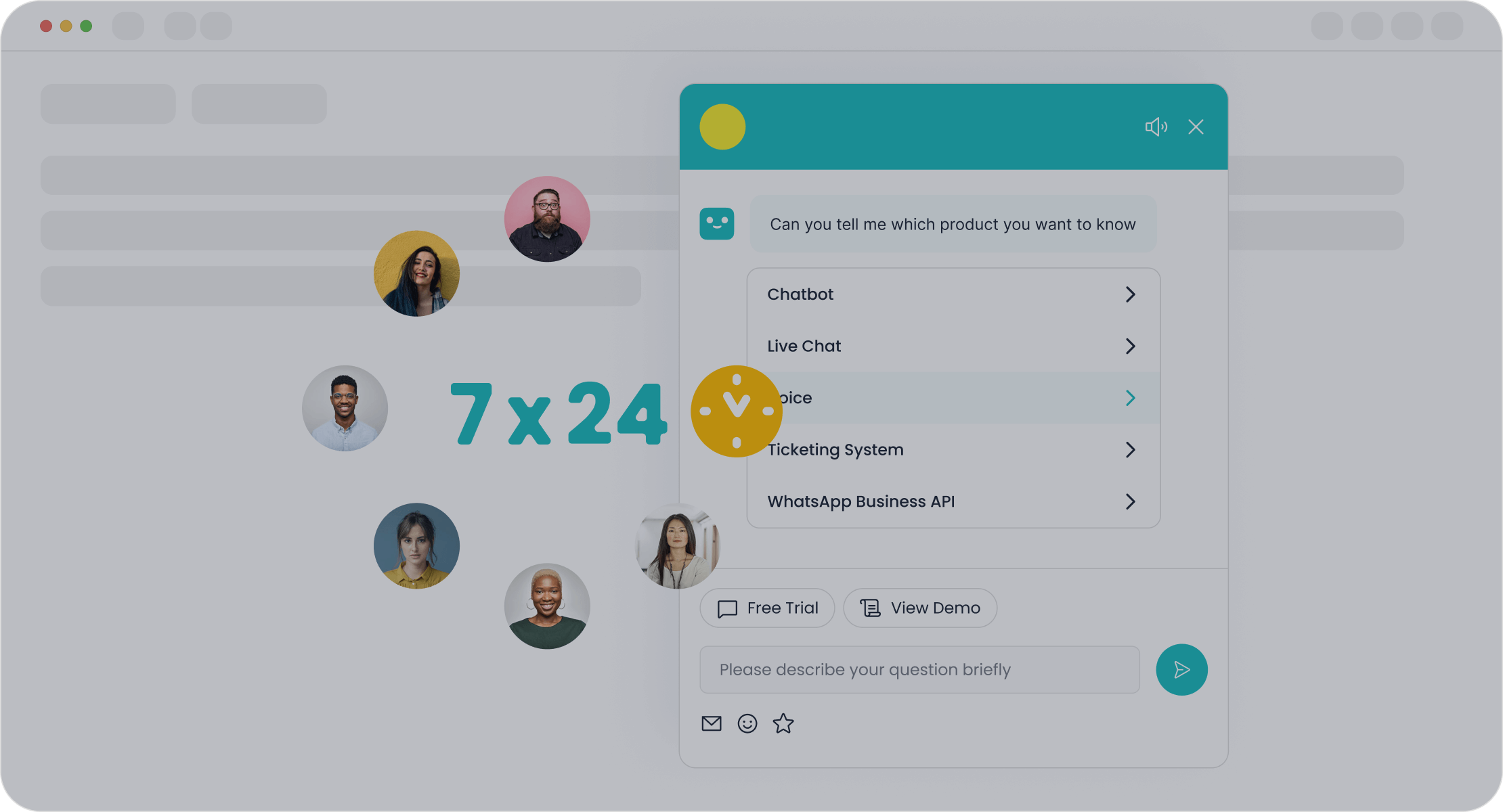Customer Service Automation Solutions for Modern Businesses 2025

Imagine a world where your customers get instant answers, no matter the time or day. That’s the magic of customer service automation solutions. These tools are reshaping how businesses interact with their audience. Did you know 90% of consumers prefer the speed of virtual agents? Or that automation can cut costs by up to 40%? These numbers show how automation is transforming industries.
By 2025, this shift will hit a critical point. With AI projected to add $13 trillion to the global economy and 55.7 billion connected devices expected, automation isn’t just a trend—it’s a necessity. Companies like Sobot are already leading the way, offering tools that boost efficiency and enhance customer satisfaction. Are you ready to embrace this change?
Understanding Customer Service Automation
What Is Customer Service Automation?
Customer service automation uses intelligent systems to handle customer inquiries and repetitive tasks. It’s like having a virtual assistant that works 24/7 to answer questions, solve problems, and even guide customers through complex processes. This approach ensures quick and accurate responses, improving the overall customer experience while freeing up your team to focus on more challenging issues.

Automation doesn’t just stop at answering questions. It tracks interactions, analyzes trends, and generates reports to help you make better decisions. Plus, it tailors services to meet your customers’ evolving needs. With tools like Sobot’s AI-powered chatbot, you can provide multilingual support, automate workflows, and even integrate with platforms like WhatsApp for seamless communication.
But here’s the catch: automation must prioritize security and privacy. Ethical systems are essential to protect customer data and comply with regulations. When done right, automation transforms how you engage with customers, making interactions faster, smarter, and more efficient.
Key Features of Automated Customer Service
Automated customer service comes packed with features that make your life easier. Here’s a quick look:
- 24/7 Availability: Customers expect instant responses, and automation delivers. Did you know 72% of customers want a reply within 30 minutes? Automation ensures you’re always available.
- Cost Efficiency: By automating routine queries, you can cut costs by up to 40%. That’s a game-changer for businesses looking to save resources.
- Enhanced Analytics: Automation improves data tracking and reporting, giving you insights to optimize your operations.
- Boosted Productivity: AI-powered tools like Sobot’s chatbot can increase productivity by 94%, allowing your team to focus on what matters most.
| Feature | Evidence |
|---|---|
| Boost productivity | 94% increase in productivity with AI |
| Offer 24/7 rapid support | 72% of customers expect a response within 30 minutes |
| Cost efficient | Automation can cut costs by up to 40% |
| Improve analytics and tracking | Enhances data capture and tracking |
| Impact on customer satisfaction | Increases scores up to 20% when implemented properly |
Why Automating Customer Service Is Essential in 2025
By 2025, automation will no longer be optional—it’ll be a necessity. Here’s why:
- Efficiency: Automation handles repetitive tasks, letting your team focus on complex issues.
- Cost Savings: With fewer resources needed for routine queries, you can allocate your budget more effectively.
- Improved Customer Satisfaction: Proactive responses and faster resolutions keep customers happy and loyal.
The numbers speak for themselves. Automation can increase customer satisfaction scores by up to 20%. With AI projected to add $13 trillion to the global economy, businesses that embrace automation will stay ahead of the curve. Sobot’s solutions, like its omnichannel platform, are already helping companies streamline operations and deliver exceptional customer experiences. Are you ready to join them?

Benefits of Customer Service Automation for Businesses

Cost Reduction and Operational Efficiency
Automating customer service can save you a lot of money. By using tools like chatbots, you reduce the need for human agents to handle repetitive tasks. This means fewer resources spent on staffing while still delivering excellent service. For example, businesses using automation have reported cost savings of up to 40%. That’s a significant reduction in expenses!
| Source | Improvement in Cost Efficiency |
|---|---|
| McKinsey Survey | 20-40% savings on customer service costs |
| Textline | Up to 40% cost reduction |
Automation also boosts operational efficiency. It streamlines workflows, reduces errors, and speeds up processes. With Sobot’s AI-powered chatbot, you can handle thousands of queries simultaneously without breaking a sweat. This efficiency allows your team to focus on more complex customer issues, improving overall productivity.
If you’re curious about how automation has helped other industries cut costs, check out these case studies.
Enhanced Customer Experience Through Automation
Customer experience is everything. When you automate customer service, you make interactions faster and smoother. Customers don’t want to wait—they want answers now. Automation tools like chatbots provide instant responses, which can improve satisfaction scores by up to 50%.
Here’s how automation enhances the experience:
- First Response Time (FRT): Shorter response times make customers happier.
- Average Resolution Time (ART): Faster resolutions lead to better satisfaction.
- Customer Lifetime Value (CLV): Automation helps you build long-term relationships.
- Customer Referral Rate: Happy customers are more likely to recommend your business.

Sobot’s chatbot takes this a step further. It’s multilingual, operates 24/7, and integrates with platforms like WhatsApp. This means your customers can reach you anytime, anywhere, in their preferred language. That’s how you create a seamless experience.
Scalability and 24/7 Availability
As your business grows, so does the demand for customer support. Automation makes scaling easy. You can handle more users, transactions, and data without increasing costs. Plus, tools like Sobot’s chatbot operate around the clock, ensuring your customers always get the help they need.
- 24/7 availability meets the expectations of over 50% of customers who want constant service.
- AI-powered systems can handle unlimited calls at once, improving satisfaction and loyalty.
- Scalability allows you to enter new markets and manage peak times effortlessly.
Imagine being able to serve customers globally without worrying about time zones. That’s the power of automation. It’s not just about keeping up—it’s about staying ahead.
Real-World Example: How Sobot’s Chatbot Boosts Efficiency
Let’s talk about how Sobot’s chatbot is transforming customer service. Imagine handling millions of queries every month without breaking a sweat. That’s exactly what the City of Buenos Aires achieved. Their chatbot manages over 2 million queries monthly, cutting their operational workload by 50%. This isn’t just about saving time—it’s about creating a smoother experience for every customer.
Another success story comes from Cradle Fund. By adopting Sobot’s chatbot, they saw user engagement quadruple. Resolution times dropped from two days to just a few clicks. On top of that, they reduced customer service costs by 35%. These numbers show how automation can completely change the way businesses operate.
Sobot’s platform also helped reduce inbound discussion volumes by 20% for one of its clients. Over two years, they maintained a 96% positive feedback rate. That’s the kind of efficiency and satisfaction every business dreams of. With automation, you’re not just solving problems—you’re building trust and loyalty.

What makes Sobot’s chatbot so effective? It’s multilingual, operates 24/7, and integrates seamlessly with platforms like WhatsApp. Whether your customers need help at midnight or during a busy holiday season, the chatbot is always ready. It doesn’t just answer questions; it learns from interactions, making it smarter over time.
If you’re looking to boost efficiency and keep your customers happy, Sobot’s chatbot is the way to go. It’s not just a tool—it’s a game-changer for modern businesses.
Overcoming Challenges in Customer Service Automation
Balancing Automation with Personalization
Automating customer service is a game-changer, but it’s not without its challenges. One of the biggest hurdles? Striking the right balance between automation and the human touch. While tools like chatbots can handle routine queries efficiently, they can’t replicate the empathy and understanding of a human agent. Customers often want personalized interactions, especially when dealing with complex or emotional issues.
Here’s the thing: preferences vary. Younger customers may lean toward automated solutions for their speed and convenience, while older individuals often prefer speaking with a real person. Even the nature of the inquiry matters. Simple questions? Automation works great. But for intricate problems, human agents are still the go-to.
To get this balance right, you need a hybrid approach. For example, Sobot’s chatbot excels at handling repetitive tasks while seamlessly transferring complex cases to human agents. This ensures your customers get the best of both worlds—efficiency and empathy.
Addressing Technical and Integration Barriers
Integrating automation tools into your existing systems can feel like solving a giant puzzle. Compatibility issues with legacy systems, data security concerns, and resistance to change are common roadblocks. Did you know 85% of CFOs report challenges in implementing automation effectively? That’s a staggering number.
But don’t worry—there are solutions. Start by assessing your current systems. Middleware and standardized APIs can help bridge compatibility gaps. For instance, Sobot’s omnichannel solution integrates effortlessly with platforms like Salesforce and Shopify, ensuring a smooth transition. Also, prioritize data security by using encryption and conducting regular audits. This builds trust with your customers and keeps their information safe.
| Barrier Type | Description | Solutions |
|---|---|---|
| Compatibility Issues | Ensuring new tools work with legacy systems is challenging. | Conduct system assessments, use middleware, and standardized APIs. |
| Resistance to Change | Employees may resist changes due to fear of job loss or complexity. | Communicate benefits, involve stakeholders, and celebrate small wins. |
| Data Integrity and Security | Transferring sensitive data raises integrity and security concerns. | Implement data validation, encryption, and regular security audits. |
Training Teams to Use Automation Tools Effectively
Even the best automation tools won’t deliver results if your team doesn’t know how to use them. Training is key. Yet, only 8% of organizations provide formal training for automation tools. That’s a huge gap.
To set your team up for success, create a comprehensive training program. Cover both technical aspects and practical applications. Hands-on workshops and simulations can make a big difference. A phased approach works well too—introduce features gradually to avoid overwhelming your team.
Sobot supports businesses by offering training resources and ongoing support. This ensures your team feels confident using tools like Sobot’s chatbot. When your employees are empowered, they’ll deliver better service, and your customers will notice the difference.
Avoiding Over-Automation in Customer Interactions
Automating customer service can revolutionize your operations, but going too far can backfire. Over-automation risks alienating your customers, especially when they feel like they’re talking to a robot instead of a real person. Striking the right balance between automation and human interaction is key to keeping your customers happy and engaged.
When automation is overused, it can lead to several issues. For instance, customers often get frustrated when they can’t reach a human agent for complex problems. Imagine trying to resolve a billing issue and being stuck in an endless loop of automated responses. That’s a surefire way to lose trust. Similarly, robotic responses from a chatbot can feel impersonal, making customers feel undervalued.
Here’s a quick look at the risks of over-automation:
| Risk Type | Description |
|---|---|
| Frustrated customers | Incorrect automation can lead to customer irritation, especially if they cannot reach a human agent. |
| Robotic responses | Automation may produce stiff, unengaging messages, failing to connect with customers effectively. |
| Missed opportunity for upsells | Over-reliance on automation can result in lost chances to upsell or cross-sell to customers. |
| Technical glitches | Automation systems can experience failures, which can disrupt customer service and satisfaction. |
To avoid these pitfalls, you need a hybrid approach. Use automation for repetitive tasks like answering FAQs or processing simple requests. For example, Sobot’s chatbot excels at handling routine queries while seamlessly transferring complex cases to human agents. This ensures your customers get efficient service without losing the personal touch.
Also, keep an eye on your automation systems. Regularly monitor their performance and gather feedback from your customers. If they’re unhappy with the experience, tweak your system to better meet their needs. Remember, automation should enhance—not replace—human interaction. By finding the right balance, you’ll create a customer service experience that’s both efficient and personal.
Best Practices for Implementing Customer Service Automation Solutions
Setting Clear Goals and Strategies
Before diving into customer service automation, you need a solid plan. Start by defining your objectives. What do you want to achieve? Maybe it’s reducing response times or cutting costs. Once you’ve set your goals, outline key performance indicators (KPIs) to measure success. For example, you might track metrics like first response time, resolution rates, or customer satisfaction scores.
It’s also smart to begin small. Test simple automations, like a chatbot for FAQs, to gather insights. This approach helps you identify what works and what doesn’t. Don’t forget to design fail-safe mechanisms. These ensure your system can handle unexpected issues without disrupting service.
A clear customer service strategy is essential. Use data analytics to spot inefficiencies in your processes. Focus on areas like response times or resource allocation. With a well-thought-out plan, you’ll set the stage for successful automation.
Combining Automation with Human Support
Automation is powerful, but it works best when paired with human support. While tools like chatbots can handle repetitive tasks, some situations still need a personal touch. For example, a chatbot can answer simple questions instantly, but a human agent is better for resolving complex issues.
This hybrid approach improves the customer experience. Automation provides 24/7 self-service options, ensuring no one waits for help. At the same time, human agents can focus on high-value interactions. This balance not only boosts satisfaction but also increases conversion rates by up to 12%.
Sobot’s chatbot excels in this area. It handles routine queries while seamlessly transferring complex cases to live agents. This ensures your customers get quick, accurate answers without losing the personal touch. By combining automation with human expertise, you’ll create a service that’s both efficient and empathetic.
Continuous Monitoring and Optimization
Automation isn’t a “set it and forget it” solution. To keep things running smoothly, you need to monitor your systems regularly. Track performance metrics like response times, resolution rates, and customer feedback. This helps you spot bottlenecks and inefficiencies before they become bigger problems.
Proactive monitoring also ensures consistent service quality. For instance, Sobot’s solutions provide detailed analytics, helping you fine-tune your processes. Regular updates and optimizations keep your automation tools aligned with your goals. Plus, minimizing downtime saves you from costly disruptions.
Think of it as a cycle: monitor, analyze, and improve. By continuously optimizing your customer service automation, you’ll stay ahead of the curve and deliver exceptional experiences every time.
Leveraging Sobot’s Omnichannel Solution for Seamless Integration
Imagine managing all your customer interactions from one unified platform. That’s exactly what Sobot’s Omnichannel Solution offers. It brings together multiple communication channels—like email, social media, and live chat—into a single workspace. This seamless integration ensures your team can deliver consistent and efficient service, no matter where your customers reach out.
One of the standout features of this solution is its ability to integrate with popular platforms like Salesforce and Shopify. This means you can access customer data instantly, making it easier to provide personalized support. For example, if a customer contacts you via WhatsApp about an order placed on your website, your team can quickly pull up their details and resolve the issue in minutes.
The results speak for themselves. Businesses using Sobot’s Omnichannel Solution have seen a 20% reduction in inbound discussion volume and a 96%+ increase in positive feedback. The AI platform provides correct answers 80% of the time, while the self-service portals resolve 22.2% of questions. These numbers highlight how automation can transform your operations.
| Metric | Value |
|---|---|
| Reduction in inbound discussion volume | 20% |
| Increase in positive feedback | 96%+ |
| Correct answers provided by AI platform | 80% |
| Customer satisfaction rate | 95% |
| Self-service question resolution rate | 22.2% |
Sobot’s chatbot plays a key role in this success. It handles repetitive queries, freeing up your agents to focus on complex issues. Plus, it operates 24/7, ensuring your customers always get the help they need. With features like multilingual support and proactive messaging, the chatbot enhances both efficiency and customer satisfaction.
By adopting Sobot’s Omnichannel Solution, you’re not just improving your service—you’re building stronger relationships with your customers. It’s a smart way to stay ahead in today’s fast-paced world of customer service automation.
Top Tools and Technologies for Customer Service Automation in 2025

AI-Powered Chatbots Like Sobot’s Chatbot

AI-powered chatbots are revolutionizing customer service. These tools handle repetitive queries, provide instant responses, and operate 24/7. Imagine a chatbot that not only answers questions but also learns from interactions to improve over time. That’s exactly what Sobot’s chatbot does. It’s multilingual, integrates with platforms like WhatsApp, and doesn’t require coding to set up. This makes it perfect for businesses of all sizes.
By 2025, 70% of organizations are expected to adopt structured automation, up from just 20% in 2021. Chatbots play a huge role in this shift. They save time, reduce costs, and boost customer satisfaction. For example, 77% of companies already use automated tools for software testing, showing how automation is becoming a standard across industries.
If you’re looking for a tool that combines efficiency with personalization, Sobot’s chatbot is a game-changer. It’s not just about answering questions—it’s about creating meaningful customer interactions.
CRM Systems with Built-In Automation Features
Customer Relationship Management (CRM) systems with automation features are essential for modern businesses. These tools streamline repetitive tasks, automate follow-ups, and trigger personalized responses based on customer behavior. This means you can focus on building relationships while the system handles the details.
For instance, CRM systems improve patient engagement by personalizing communication and automating care plans. In customer service, they enhance operational efficiency and ensure consistent communication. Imagine sending timely follow-ups without lifting a finger. That’s the power of automation in CRM.
Sobot’s omnichannel solution integrates seamlessly with popular CRMs like Salesforce. This allows you to access customer data instantly, making it easier to provide personalized support. Whether it’s automating workflows or improving response times, CRM systems with automation features are a must-have for 2025.
Workflow Automation Platforms for Customer Support
Workflow automation platforms simplify complex processes. They reduce errors, speed up resolutions, and improve overall efficiency. For example, these platforms can cut resolution times by 52% and first response times by 37%. That’s a big deal when every second counts in customer service.
Sobot’s omnichannel solution is a great example. It consolidates multiple communication channels into one workspace, making it easier to manage customer interactions. The platform also provides analytics to help you optimize your operations. Businesses using workflow automation have seen a 36% increase in repeat purchases and a 27% decrease in ticket-to-order ratios.
Here’s a quick look at the impact of workflow automation:
| Metric | Improvement |
|---|---|
| Repeat Purchases | 36% increase |
| First Response Time | 37% reduction |
| Resolution Time | 52% reduction |
| Ticket-to-Order Ratio | 27% decrease |
| Customer Satisfaction (CSAT) | 1% increase |

With tools like Sobot’s platform, you can handle more customers, improve satisfaction, and scale your operations effortlessly.
Omnichannel Support Solutions for Unified Customer Interactions
Imagine juggling multiple conversations across email, social media, and live chat. Sounds overwhelming, right? That’s where omnichannel support solutions step in. They unify all customer interactions into one seamless platform, making it easier for you to deliver consistent and efficient service.
With an omnichannel solution, your customers can reach you on their preferred channel—whether it’s WhatsApp, email, or even a chatbot. The best part? All these interactions are stored in one place, giving your team a complete view of the customer journey. This means faster resolutions, personalized experiences, and happier customers.
Metrics like customer satisfaction (CSAT) and first contact resolution (FCR) show how effective these solutions are. For example:
| Metric | Description |
|---|---|
| Customer satisfaction (CSAT) | Measures customer satisfaction with their experience through a survey. |
| Net promoter score (NPS) | Assesses customer loyalty by asking how likely they are to recommend the company. |
| First contact resolution (FCR) | Indicates the percentage of issues resolved on the first interaction with support. |
| Average handle time (AHT) | Represents the average duration of customer interactions to achieve resolution. |
| Schedule adherence | Evaluates the alignment between scheduled and actual working times of support agents. |
| Occupancy rate | Measures the time agents spend actively engaged with customers versus their total working time. |
Sobot’s omnichannel solution takes this to the next level. It integrates with platforms like Salesforce and Shopify, ensuring your team has instant access to customer data. Whether it’s a chatbot resolving FAQs or an agent handling a complex issue, the transition is seamless. Businesses using Sobot’s platform have seen a 20% reduction in inbound discussion volume and a 96% increase in positive feedback. That’s the power of automation combined with a unified approach.
By adopting an omnichannel strategy, you’re not just improving efficiency—you’re building trust and loyalty. Your customers will feel valued, and your team will work smarter, not harder. Isn’t that what every business strives for?
Steps to Effectively Implement Customer Service Automation
Assessing Business Needs and Identifying Opportunities
Before diving into customer support automation, you need to understand where it can make the biggest impact. Start by analyzing your current processes. Are there repetitive tasks slowing your team down? Do customers often complain about long wait times? Identifying these pain points helps you focus on areas where automation can truly shine.
To do this, use tools like flowcharts or process maps to visualize workflows. Customer journey mapping is another great way to spot bottlenecks and opportunities for improvement. For example, if customers frequently abandon inquiries midway, automation could step in to provide instant responses. Techniques like SWOT analysis or root cause analysis can also uncover hidden inefficiencies. By taking a closer look at your operations, you’ll find the right opportunities to improve efficiency and enhance customer satisfaction.
Selecting the Right Tools and Technologies
Choosing the right automation system is crucial. Start by defining what success looks like for your business. Do you want to reduce response times or improve efficiency? Once you’ve set clear goals, look for tools that align with them. For instance, Sobot’s AI-powered chatbot offers 24/7 multilingual support and integrates seamlessly with platforms like WhatsApp. It’s perfect for businesses aiming to streamline customer interactions.
When evaluating tools, consider their scalability and ease of use. A user-friendly interface minimizes training time, while scalability ensures the system grows with your business. Security is another must-have. Make sure the tool complies with data protection regulations to keep customer information safe. Lastly, check the vendor’s reputation and support services. A reliable partner like Sobot can make all the difference in your automation journey.
Training Teams and Setting Up Processes
Even the best automation tools need a well-trained team to unlock their full potential. Start by identifying gaps in your current processes. Are there tasks your team struggles with? Use this insight to design workflows that complement the automation system. For example, Sobot’s chatbot can handle FAQs, but your team should know when to step in for complex issues.
Training is key. Hands-on workshops and simulations can help your team get comfortable with the new system. Real-world examples, like automated onboarding processes in HR, show how automation simplifies tasks and improves outcomes. Once your team is trained, continuously monitor and refine the workflows. This ensures the system adapts to your evolving needs and keeps delivering exceptional customer experiences.
Monitoring Performance and Gathering Feedback for Improvement
Once you’ve implemented automated customer service tools, the next step is to ensure they’re working as intended. Monitoring performance and gathering feedback are essential to keep your automation systems running smoothly and delivering the best customer service experience.
Start by tracking key metrics. These help you measure how well your automation is performing and where improvements are needed. For example, you can monitor quality output to see if the automated responses meet your standards. Productivity metrics, like task completion rates and resource utilization, show how efficiently your system operates. Customer satisfaction surveys are another great way to gauge how happy your customers are with the service.
Here’s a quick look at some important metrics to track:
| Metric | Description |
|---|---|
| Quality Output | Measures if the output meets expected quality levels, enhancing reliability and growth. |
| Better Productivity | Assesses productivity through cycle time, resource utilization, and task completion rates. |
| Motivated Staff | Evaluates employee satisfaction and motivation through surveys and retention rates. |
| ROI / Cost Reduction | Analyzes financial impact by comparing savings from automation against initial investments. |
| Reliability | Estimates system reliability by comparing downtimes before and after automation. |
| Customer Satisfaction | Gauges overall customer experience through satisfaction surveys and feedback. |
Feedback is just as important as metrics. Ask your customers how they feel about the automated responses they receive. Are they quick? Are they accurate? Use this input to fine-tune your system. Tools like Sobot’s conversational AI make it easy to gather and analyze feedback. They also help you identify patterns, like common complaints or recurring issues, so you can address them proactively.
Don’t forget to involve your team. Employees who use automated customer service tools daily often have valuable insights. Regular check-ins and surveys can reveal what’s working and what’s not. This keeps your staff motivated and ensures your automation aligns with their needs.
By combining performance monitoring with customer and employee feedback, you’ll create a system that evolves with your business. Automation isn’t a one-and-done deal—it’s a continuous process of improvement. With the right approach, you’ll not only enhance your customer service experience but also build trust and loyalty.
Customer service automation solutions are no longer just an option—they’re a necessity for modern businesses in 2025. They bring unmatched efficiency, cost savings, and scalability, allowing you to handle multiple queries simultaneously while reducing operational costs. Tools like Sobot’s Chatbot take this further by offering 24/7 multilingual support and seamless integration with platforms like WhatsApp, ensuring consistent customer satisfaction.
The benefits go beyond efficiency. Automation empowers your team by handling repetitive tasks, freeing them to focus on complex issues. It also provides valuable data insights, helping you refine strategies and improve customer experiences. With conversational AI and chatbots, you can deliver personalized interactions that build loyalty and trust.
Now’s the time to embrace a customer service automation platform. By adopting these solutions, you’ll not only enhance customer satisfaction but also position your business for sustainable growth in a competitive market.
FAQ
What is customer service automation?
Customer service automation uses tools like AI chatbots to handle repetitive tasks and customer inquiries. It works 24/7, providing instant responses and improving efficiency. For example, Sobot’s chatbot can resolve up to 83% of queries autonomously, saving time and boosting customer satisfaction.
How does automation improve customer satisfaction?
Automation speeds up response times and ensures consistent service. Customers get answers instantly, even during peak hours. Tools like Sobot’s omnichannel solution unify communication channels, making interactions seamless. Businesses using automation report a 20% increase in customer satisfaction scores.
Tip: Faster responses = Happier customers!
Can automation reduce operational costs?
Yes! Automation cuts costs by handling routine queries without human agents. Sobot’s chatbot, for instance, saves up to 50% on staffing expenses by operating 24/7. This allows businesses to allocate resources more effectively while maintaining high service quality.
Is automation suitable for small businesses?
Absolutely! Automation tools like Sobot’s chatbot are scalable and easy to use. They don’t require coding, making them perfect for small businesses. Plus, automation helps small teams handle large volumes of inquiries efficiently, improving both productivity and customer experience.
How do I balance automation with human support?
Use a hybrid approach. Let automation handle repetitive tasks, and assign complex issues to human agents. Sobot’s chatbot seamlessly transfers cases to live agents when needed. This ensures customers get quick answers without losing the personal touch.
Note: Balance is key to keeping customers happy and engaged.
See Also
Best Cloud Contact Center Solutions You Need in 2024
Comprehensive Reviews of Contact Center Solutions for 2024
Enhancing Efficiency With AI-Driven Customer Service Tools
Leading Cloud Contact Center Services Reviewed for 2024
A Guide to Successfully Implementing Omnichannel Contact Centers